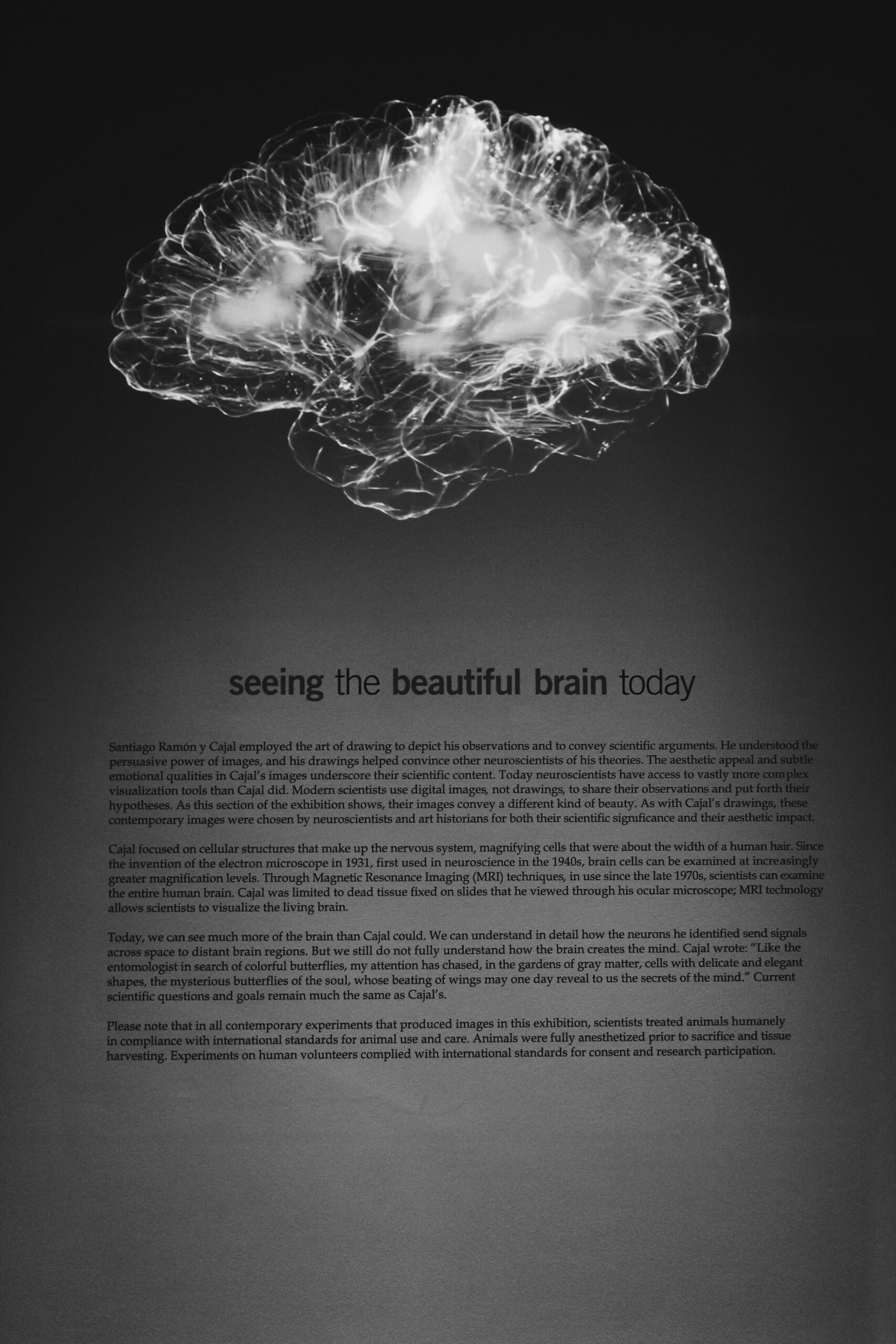
Contents

Recent advancements in neuroscience have led to a groundbreaking discovery that has profound implications for our understanding of human cognition and memory. A new study has revealed that the brain’s storage capacity is nearly ten times greater than previously estimated. This finding challenges long-held beliefs about the limitations of our mental faculties and opens up new avenues for research into the intricate workings of the human brain.
The significance of this revelation cannot be overstated. For decades, scientists have endeavored to decode the mysteries of the brain, focusing on its ability to store and retrieve information. Traditionally, it was believed that the human brain could hold approximately 1 terabyte of data. However, the latest research suggests that this figure is vastly underestimated. The brain’s actual storage capacity may be closer to 10 terabytes, a revelation that redefines our understanding of memory and learning processes.
This discovery is a milestone in the field of neuroscience, offering new perspectives on how memories are formed, stored, and recalled. It raises intriguing questions about the potential for enhancing cognitive functions and improving memory retention. As researchers delve deeper into these findings, we can anticipate a surge in studies aimed at unlocking the full potential of the human brain.
Moreover, the implications of this discovery extend beyond academic research. Understanding the brain’s true storage capacity could lead to advancements in educational methods, therapeutic practices, and even artificial intelligence. By drawing parallels between the brain’s storage mechanisms and computer storage, scientists may develop innovative techniques to boost cognitive performance and treat memory-related disorders.
In light of these findings, it is evident that our brains possess a remarkable and previously unrecognized capacity for storing information. This revelation not only enhances our comprehension of human cognition but also underscores the limitless potential of the human mind.
The Study: Methodology and Key Findings
The groundbreaking study on the brain’s storage capacity employed a variety of advanced technologies and innovative techniques to arrive at its startling conclusions. Researchers utilized high-resolution imaging, including functional magnetic resonance imaging (fMRI) and diffusion tensor imaging (DTI), to map the intricate neural connections within the brain. These imaging techniques enabled the team to observe the structural and functional aspects of neural networks with unprecedented detail.
Complementing these imaging methods, the researchers also applied sophisticated computational models to estimate the brain’s capacity for storing information. By simulating neural activity and connectivity patterns, they were able to gauge the potential volume of data that the brain could theoretically hold. The combination of empirical imaging data and theoretical modeling provided a comprehensive view of the brain’s storage capabilities.
The key findings of the study revealed that the human brain is capable of storing an astonishing amount of information—up to ten times more than previously estimated. This discovery challenges long-held assumptions about the brain’s limitations. The researchers found that the density of synaptic connections and the efficiency of neural coding contribute significantly to this enhanced storage capacity. Essentially, the brain’s ability to store information is not solely dependent on the number of neurons but also on the complexity and efficiency of their interconnections.
One of the most intriguing aspects of the findings is the role of synaptic plasticity— the brain’s ability to strengthen or weaken synapses in response to activity. This plasticity allows for a highly dynamic and adaptable storage system, enabling the brain to efficiently encode and recall vast amounts of data. The study suggests that our cognitive abilities, memory retention, and learning processes are far more robust than previously understood.
These revelations have profound implications for our understanding of the brain. They not only redefine our conception of cognitive limits but also open up new avenues for research into enhancing brain function and treating neurological conditions. The methodologies and findings of this study mark a significant leap forward in the field of neuroscience, offering a deeper insight into the incredible potential of the human brain.
The human brain, often compared to a highly sophisticated computer, achieves its remarkable storage capacity through the intricate interplay of neurons and synapses. These biological components are fundamental to the brain’s ability to store and process vast amounts of information. Neurons, the primary cells of the nervous system, act as the brain’s ‘memory units.’ Each neuron has the capability to form thousands of synapses, the junctions through which neurons communicate with one another.
Synapses are not merely static connections; they are dynamic structures that facilitate the transmission of electrical and chemical signals. This synaptic plasticity, the ability of synapses to strengthen or weaken over time, is crucial for learning and memory. When we acquire new information, neurons fire and create new synaptic connections or modify existing ones. This process, known as synaptic plasticity, underlies our ability to learn, remember, and adapt to new information.
The recent study revealing the brain’s capacity to store 10 times more data than previously thought brings new insights into how these components function together. Researchers have discovered that the brain’s ability to store information is not solely dependent on the number of neurons and synapses but also on the efficiency and adaptability of these connections. The study highlights that the synaptic changes can encode far more information than previously understood, thanks to the complex patterns of synaptic activity and the varying strengths of these connections.
Moreover, the study suggests that neurons can participate in multiple networks simultaneously, allowing for a more efficient use of the brain’s storage capacity. This multi-network participation means that a single neuron can contribute to various memories or pieces of information, enhancing the brain’s overall storage efficiency. These findings underscore the brain’s remarkable adaptability and the sophisticated mechanisms it employs to optimize information storage.
In essence, the brain’s neurons and synapses work in tandem to create a highly efficient and dynamic system for information storage. The enhanced understanding of these ‘memory units’ not only sheds light on the brain’s astonishing storage capacity but also opens up new avenues for research into cognitive function and memory-related disorders.
Implications for Artificial Intelligence and Machine Learning
The recent study revealing the brain’s capacity to store 10 times more data than previously thought opens significant avenues for advancements in artificial intelligence (AI) and machine learning. Understanding the intricate storage mechanisms of the human brain could lead to the development of more efficient data storage and processing systems in AI. By mimicking the brain’s ability to encode and retrieve vast amounts of information, AI systems could achieve unprecedented levels of performance and efficiency.
One of the key areas where this understanding could be transformative is in the development of neural networks. Current AI models, such as deep learning networks, are inspired by the structure and function of the human brain. However, they still fall short in terms of data storage efficiency and processing speed. Insights from the study could inform the design of next-generation neural networks that more closely replicate the brain’s capabilities, leading to more robust and adaptive AI systems.
Moreover, the study’s findings could also impact the field of machine learning, particularly in the context of data compression and retrieval. Traditional machine learning algorithms often require large amounts of data and computational power. By leveraging the brain’s efficient storage mechanisms, researchers could develop algorithms that require less data to achieve high accuracy, thereby reducing the computational burden and making AI more accessible and scalable.
Ongoing research is already exploring the intersection of biological and artificial intelligence. Projects like neuromorphic engineering aim to create AI systems that emulate the neural architecture and processes of the brain. These efforts are likely to benefit from the new insights into the brain’s storage capacity, accelerating progress toward more intelligent and efficient AI. As we continue to unravel the complexities of the brain, the potential for AI and machine learning to evolve and transform various industries becomes increasingly promising.
The recent discoveries concerning the brain’s storage capacity have the potential to revolutionize educational practices and learning strategies. With the understanding that the brain can store ten times more data than previously believed, educators and researchers are prompted to rethink the methodologies used in teaching and cognitive training. This newfound knowledge opens the door to enhancing memory retention and providing more personalized learning experiences.
One of the most significant applications of this revelation lies in memory retention techniques. Traditional rote memorization might be supplemented with strategies that leverage the brain’s vast storage capacity more effectively. Techniques such as spaced repetition, which involves reviewing information at increasing intervals, could be optimized further. This method already benefits from the brain’s ability to consolidate information over time, and with the new insights, it can be fine-tuned to maximize retention.
Personalized learning stands to gain substantially from these findings. Adaptive learning technologies that tailor educational content to individual students’ needs can now incorporate more sophisticated algorithms that account for the enhanced storage capacity. Such systems can dynamically adjust the difficulty of material, ensuring that it aligns with the learner’s evolving cognitive capabilities. This results in a more engaging and effective learning experience, as students are neither bored by material that is too easy nor overwhelmed by content that is too challenging.
Cognitive training programs, designed to improve various mental functions, could also see significant improvements. Tools like brain-training apps, which offer exercises to boost memory, attention, and problem-solving skills, can be updated with new protocols that exploit the brain’s increased storage potential. This could lead to more efficient training sessions and faster cognitive improvements.
Current educational programs and tools that could benefit from these insights include interactive e-learning platforms, virtual classrooms, and memory enhancement workshops. By integrating the latest neuroscientific findings into their frameworks, these programs can provide a more robust and scientifically-grounded approach to learning. This not only helps in better knowledge retention but also in fostering a deeper understanding of the material.
Health and Neurological Disorders: New Avenues for Research
The revelation that the brain can store ten times more data than previously estimated opens unprecedented avenues for understanding and treating neurological disorders. This breakthrough has profound implications for conditions such as Alzheimer’s disease and other forms of dementia, where memory deterioration is a primary symptom.
With the new insights into the brain’s storage capacity, researchers are now better equipped to explore the mechanics of memory formation and retention. This understanding could lead to early diagnosis methods that identify the onset of Alzheimer’s and similar disorders before significant cognitive decline occurs. For instance, novel diagnostic tools might be developed to detect subtle changes in the brain’s data storage patterns, allowing for earlier and more accurate interventions.
Moreover, the findings pave the way for innovative treatments aimed at enhancing or preserving memory. By leveraging the brain’s vast storage potential, therapeutic strategies could be designed to strengthen neural connections and prevent the loss of crucial information. This could involve a combination of pharmacological treatments and cognitive therapies tailored to bolster the brain’s natural memory-preserving abilities.
Ongoing research initiatives are already being inspired by this discovery. Scientists are now investigating how the brain’s storage capacity can be harnessed to counteract the effects of neurodegenerative diseases. Some studies are focusing on the role of synaptic plasticity—the brain’s ability to adapt and reorganize itself—suggesting that enhancing this plasticity could stave off memory decline.
Future research will likely delve deeper into the molecular and cellular mechanisms underpinning the brain’s storage capabilities. Understanding these processes could lead to groundbreaking advancements in both preventive and therapeutic measures for neurological disorders. By tapping into the brain’s extraordinary potential, we move closer to a future where memory-related conditions can be more effectively managed, if not entirely prevented.
Ethical and Philosophical Considerations
The revelation that the human brain can store ten times more data than previously estimated presents profound ethical and philosophical questions. At the forefront is the temptation to manipulate or enhance human memory storage. While the prospect of augmenting cognitive abilities is tantalizing, it raises significant ethical concerns. The potential for unequal access to such advancements could exacerbate social divisions, creating a disparity between those who can afford cognitive enhancements and those who cannot. This could lead to an unequal society where cognitive superiority becomes a criterion for success, further marginalizing already disadvantaged groups.
Moreover, the manipulation of memory storage touches on the core of human identity and consciousness. Memories play a crucial role in shaping an individual’s sense of self, informing their decisions, and maintaining continuity of experience. Altering or enhancing memory could fundamentally change an individual’s personality or perception of reality. This leads to philosophical dilemmas about the authenticity of enhanced memories and the true essence of human nature. If memories can be artificially altered or expanded, the question arises: what constitutes genuine human experience?
Furthermore, the broader impact on our understanding of consciousness cannot be overlooked. The brain’s astonishing capacity suggests that our current models of consciousness may need reevaluation. If memory storage can be expanded, it implies a more dynamic and fluid conception of consciousness, where the boundaries of human cognition are far more elastic than previously considered. This has profound implications for fields ranging from neuroscience to artificial intelligence, as it challenges existing paradigms about the limits of human cognition.
Finally, we must consider the ethical boundaries of such advancements. Regulation and oversight will be critical to ensure that memory enhancement technologies are used responsibly and equitably. Ethical guidelines must be established to prevent misuse, protect individual privacy, and maintain the integrity of human identity. As we stand on the brink of potentially transformative cognitive technologies, it is imperative to carefully weigh the benefits against the moral and philosophical dilemmas they present.
Conclusion: The Future of Brain Research
The recent revelations about the brain’s remarkable storage capacity have significantly shifted our understanding of human cognition. The discovery that the brain can store ten times more data than previously thought underscores the immense potential locked within our neural structures. This breakthrough not only redefines the limits of memory storage but also highlights the intricate complexities of neuronal connectivity and synaptic plasticity that contribute to our cognitive abilities.
As we delve deeper into the intricacies of brain function, it becomes evident that continued exploration is paramount. Advancements in neuroscience hold the promise of profound implications for various fields, including artificial intelligence, mental health, and education. By decoding the brain’s storage mechanisms, we stand on the brink of developing more sophisticated AI systems that emulate human learning and memory processes with greater accuracy.
Moreover, a deeper understanding of the brain’s storage capacity can lead to innovative treatments for neurological disorders. Conditions such as Alzheimer’s disease, which severely impair memory and cognitive function, could potentially be mitigated through targeted therapies that enhance or restore neural connectivity. This could significantly improve the quality of life for millions of individuals affected by such disorders.
In the realm of education, insights into the brain’s data storage capabilities can revolutionize teaching methodologies. By tailoring educational practices to align with how the brain optimally stores and retrieves information, educators can enhance learning outcomes and foster a more effective learning environment for students at all levels.
As we look to the future, it is vital to remain informed about ongoing developments in neuroscience. The continuous exploration of the brain’s capabilities holds the key to unlocking new frontiers in science, technology, and society at large. By staying engaged with the latest research, we can collectively contribute to the advancement of knowledge and the betterment of human life.
OUR SITE: toinewsalert.com





